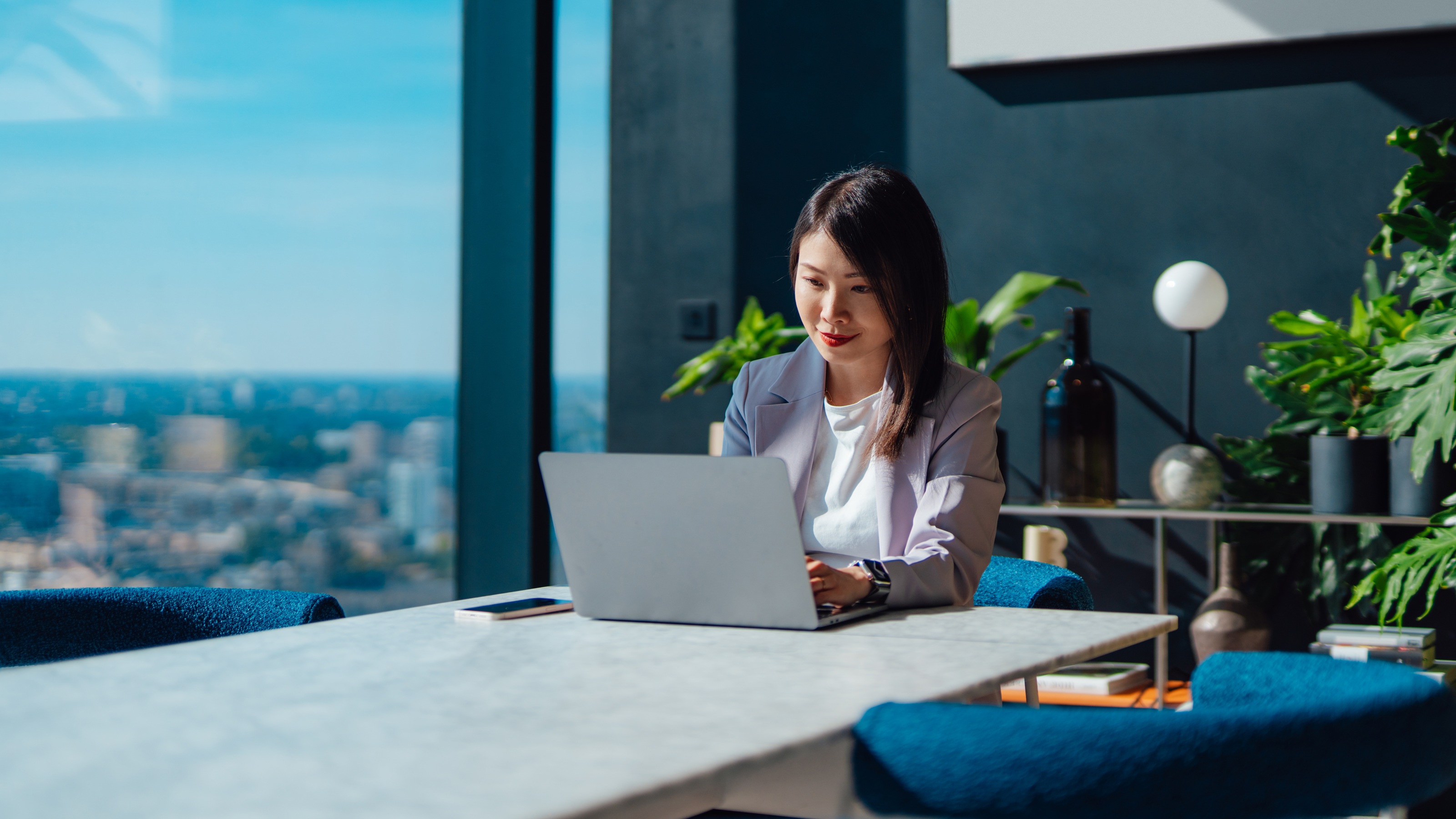What’s So Great about Diversification?
Balancing out the risks and rewards of your investment portfolio is always a good idea. Here are the basics of diversification and the different asset classes that will help you get the job done.


Whether you’re a novice hobby trader, a seasoned titan of Wall Street, or just beginning to research investing, you’ve probably heard of diversification. At some point, you’ve been casually channel surfing and stumbled upon a financial pundit touting the necessity to diversify your investment portfolio. But why is diversification such a universally known investment strategy?
Simply put, diversification is holding investments that will react differently to the same market or economic event. In other words, a well-diversified portfolio offers balanced growth and mitigated risk by spreading across multiple asset types and classes. Whenever I speak about diversification, I often revert to lessons that my father taught me — and I’ve since passed to my own children — about not keeping all your eggs in one basket.
Although it’s a common phrase, its origins come from the practical agrarian application. You see, I learned not to keep all my eggs in one basket — and thereby, diversification — from actually collecting eggs with my father. I thought I could finish my chores faster if I just filled the egg basket to the brim and ran home. Unfortunately, I tripped over a hose and the eggs went flying. Diversification protects your portfolio from disaster when you trip on a hose with your egg basket.
From just $107.88 $24.99 for Kiplinger Personal Finance
Become a smarter, better informed investor. Subscribe from just $107.88 $24.99, plus get up to 4 Special Issues

Sign up for Kiplinger’s Free Newsletters
Profit and prosper with the best of expert advice on investing, taxes, retirement, personal finance and more - straight to your e-mail.
Profit and prosper with the best of expert advice - straight to your e-mail.
Nobel Laureate Harry Markowitz, once described diversification as “the only free lunch in investing.” What he meant was that, by diversifying, investors can receive the benefit of reduced risk without diminishing their returns. With that in mind, let’s look at some of the basic asset classes and how they can be further diversified.
Cash and Cash Equivalents
Cash and cash equivalents are great assets to have. However, they are subject to inflation, so, you may not want to rely too heavily on them. You can diversify cash and cash equivalents by purchasing them in three forms: U.S. currency, foreign currency and crypto currency.
Bonds and Fixed Income
Essentially, these allow you to loan money to the bond issuer — typically, the U.S. government or a corporation — and they pay it back with a fixed amount of interest when the bond reaches maturity. Like the rest of the asset classes, bonds and fixed income come in a variety of flavors, ranging from general obligation bonds to municipality or even U.S. Treasury bonds. Each one responds differently to various market phenomena.
U.S. Equities
These are common stocks found on the Nasdaq or New York Stock Exchange. Each one represents an American business. Within the market, there are a variety of equities and, ideally, you want to have some of each in your portfolio. These can be further broken down into large-, mid- and small-cap companies and may be categorized as growth or value stocks. Depending on their individual type, they may have varying risk/return ratios and return at different rates.
Commodities
These are literally anything that someone is willing to pay a price for. Commodities are any goods that are readily tradable or sellable for the exchange of currency or goods, such as gold, oil or even soybeans and livestock. There really aren’t any limits to the ways that this asset class can be diversified.
Real Estate
This may be one of the most popular asset classes available. This is because it is a hard asset, meaning that, unlike stocks and bonds, you will own tangible or physical property. On top of that, real estate is a naturally diverse asset type. You can invest in anything from commercial and residential properties to mining, timber and farmland.
Global Markets
Essentially, these assets are the opposite of U.S. equities. They are traded or exchanged on the international markets. However, they do come in the same varieties (large-, mid- and small-cap/value and growth) and will have the same kind of risk/return ratios. Additionally, the global market asset class can add an extraordinary amount of diversification to your portfolio.
Global Fixed Income
Just as global markets are to U.S. equities, global fixed income is to bonds and fixed income. It’s the same basic idea but spread out to include the international market. Similar to the bonds and fixed income asset class, global fixed income offers further diversification through government and general obligation bonds.
There are many other asset classes available to investors. However, these are a few of the most popular. Regardless of when or how you choose to invest, adding diversity to your portfolio offers the benefit of mitigated risk without diminishing returns. As always, this is not advice, and you should conduct your own due diligence and speak to your financial planner before making any investment decisions.
Certified Financial Planner Board of Standards Inc. (CFP Board) owns the CFP® certification mark, the CERTIFIED FINANCIAL PLANNER™ certification mark, and the CFP® certification mark (with plaque design) logo in the United States, which it authorizes use of by individuals who successfully complete CFP Board’s initial and ongoing certification requirements.
Profit and prosper with the best of Kiplinger's advice on investing, taxes, retirement, personal finance and much more. Delivered daily. Enter your email in the box and click Sign Me Up.

Justin A. Goodbread is a CERTIFIED FINANCIAL PLANNER™ practitioner and an adviser with WealthSource® Knoxville. After years of working in a large firm, he ventured out on his own in 2009, starting Heritage Investors, and eventually joining WealthSource® Partners LLC in 2022. As a serial small-business owner, Goodbread has bought and sold multiple businesses. He uses this experience, along with his continuing education, to help business owners grow and sell what is often their largest asset.
-
 'Humbug!' Say Consumers, Despite Hot GDP: Stock Market Today
'Humbug!' Say Consumers, Despite Hot GDP: Stock Market Today"The stock market is not the economy," they say, but both things are up. Yet one survey says people are still feeling down in the middle of this complex season.
-
 The SEC Is Concerned for Older Investors and Retirement Savers. Here's What You Should Know
The SEC Is Concerned for Older Investors and Retirement Savers. Here's What You Should KnowThe SEC focusing on older investors, retirement and college savers, and private securities. Here's how those changes impact you.
-
 Vesting, Catch-Ups and Roths: The 401(k) Knowledge Quiz
Vesting, Catch-Ups and Roths: The 401(k) Knowledge QuizQuiz Test your understanding of key 401(k) concepts with our quick quiz.
-
 How to Protect Yourself and Others From a Troubled Adult Child: A Lesson from Real Life
How to Protect Yourself and Others From a Troubled Adult Child: A Lesson from Real LifeThis case of a violent adult son whose parents are in denial is an example of the extreme risks some parents face if they neglect essential safety precautions.
-
 To Build Client Relationships That Last, Embrace Simplicity
To Build Client Relationships That Last, Embrace SimplicityAs more automation becomes the norm, you can distinguish yourself as a financial professional by using technology wisely and prioritizing personal touches.
-
 Client Demand Is Forcing Financial Advisers to Specialize: How to Deliver
Client Demand Is Forcing Financial Advisers to Specialize: How to DeliverThe complexity of wealthy clients' needs — combined with AI and consumer demand — suggests the future of financial planning belongs to specialized experts.
-
 A Financial Planner Takes a Deep Dive Into How Charitable Trusts Benefit You and Your Favorite Charities
A Financial Planner Takes a Deep Dive Into How Charitable Trusts Benefit You and Your Favorite CharitiesThese dual-purpose tools let affluent families combine philanthropic goals with advanced tax planning to generate income, reduce estate taxes and preserve wealth.
-
 A 5-Step Plan for Parents of Children With Special Needs, From a Financial Planner
A 5-Step Plan for Parents of Children With Special Needs, From a Financial PlannerGuidance to help ensure your child's needs are supported now and in the future – while protecting your own financial well-being.
-
 How Financial Advisers Can Best Help Widowed and Divorced Women
How Financial Advisers Can Best Help Widowed and Divorced WomenApproaching conversations with empathy and compassion is key to helping them find clarity and confidence and take control of their financial futures.
-
 A Wealth Adviser Explains: 4 Times I'd Give the Green Light for a Roth Conversion (and 4 Times I'd Say It's a No-Go)
A Wealth Adviser Explains: 4 Times I'd Give the Green Light for a Roth Conversion (and 4 Times I'd Say It's a No-Go)Roth conversions should never be done on a whim — they're a product of careful timing and long-term tax considerations. So how can you tell whether to go ahead?
-
 A 4-Step Anxiety-Reducing Retirement Road Map, From a Financial Adviser
A 4-Step Anxiety-Reducing Retirement Road Map, From a Financial AdviserThis helpful process covers everything from assessing your current finances and risks to implementing and managing your personalized retirement income plan.